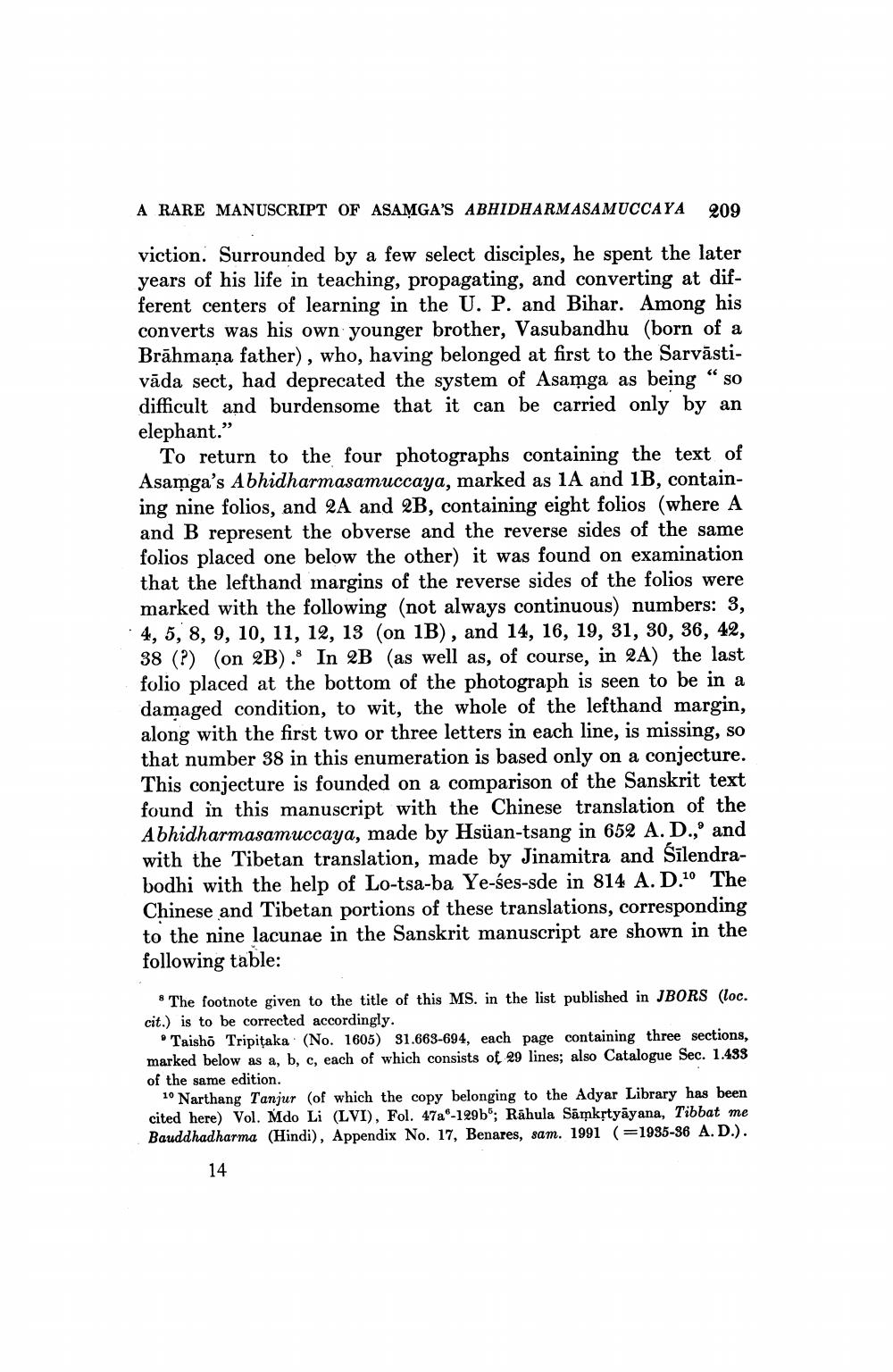Book Title: Rare Mmanuscript Of Asamgas Abhidharma Samuccaya Author(s): V V Gokhale Publisher: V V Gokhale View full book textPage 3
________________ A RARE MANUSCRIPT OF ASAMGA'S ABHIDHARMASAMUCCAYA 209 viction. Surrounded by a few select disciples, he spent the later years of his life in teaching, propagating, and converting at different centers of learning in the U. P. and Bihar. Among his converts was his own younger brother, Vasubandhu (born of a Brāhmaṇa father), who, having belonged at first to the Sarvástivāda sect, had deprecated the system of Asamga as being “ so difficult and burdensome that it can be carried only by an elephant.” To return to the four photographs containing the text of Asamga's Abhidharmasamuccaya, marked as 1A and 1B, containing nine folios, and 2A and 2B, containing eight folios (where A and B represent the obverse and the reverse sides of the same folios placed one below the other) it was found on examination that the lefthand margins of the reverse sides of the folios were marked with the following (not always continuous) numbers: 3, 4, 5, 8, 9, 10, 11, 12, 13 (on 1B), and 14, 16, 19, 31, 30, 36, 42, 38 (?) (on 2B). In 2B (as well as, of course, in 2A) the last folio placed at the bottom of the photograph is seen to be in a damaged condition, to wit, the whole of the lefthand margin, along with the first two or three letters in each line, is missing, so that number 38 in this enumeration is based only on a conjecture This conjecture is founded on a comparison of the Sanskrit text found in this manuscript with the Chinese translation of the Abhidharmasamuccaya, made by Hsüan-tsang in 652 A.D., and with the Tibetan translation, made by Jinamitra and Sīlendrabodhi with the help of Lo-tsa-ba Ye-ses-sde in 814 A. D.10 The Chinese and Tibetan portions of these translations, corresponding to the nine lacunae in the Sanskrit manuscript are shown in the following table: * The footnote given to the title of this MS. in the list published in JBORS (loc. cit.) is to be corrected accordingly. • Taisho Tripitaka (No. 1605) 31.663-694, each page containing three sections, marked below as a, b, c, each of which consists of 29 lines; also Catalogue Sec. 1.433 of the same edition. 10 Narthang Tanjur (of which the copy belonging to the Adyar Library has been cited here) Vol. Mdo Li (LVI), Fol. 47a-129b”; Rāhula Sámkrtyāyana, Tibbat me Bauddhadharma (Hindi), Appendix No. 17, Benares, sam. 1991 (=1985-86 A. D.). 14Page Navigation
1 2 3 4 5 6 7
